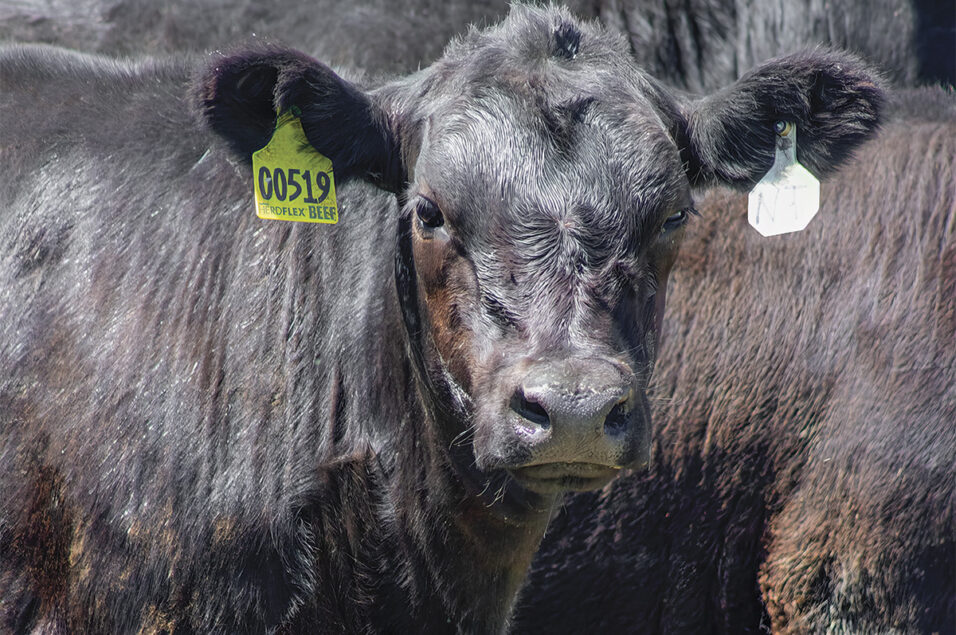With dairy heifer replacement values at historic highs due to tight inventory, keeping high-producing dairy cows in a herd, especially those beyond their first lactation, is economically significant.
This is important for two reasons – not only must farms cover higher replacement costs, but total milk volume is also affected when older cows leave the herd. That is because first-lactation animals produce 80%-85% of the milk that a cow in its third or greater lactation can produce.
To overcome these challenges, some dairies are turning to beef embryo transfer (ET) to keep productive cows in their herds longer. Under certain market conditions, the resulting calf also brings higher value to the farm.
A veterinarian’s perspective
Dr. Monty Belmer, a veterinarian with Waupun Veterinary Services in Waupun, Wisconsin, works with several herds that have adopted this strategy.
“I work with a number of well-managed herds that have experienced more cows leaving the farm for reproductive failure than they wanted,” he explains. “The cows might be removed from the herd for low production or an affiliated reason, but if you look at the records, their low production was due to extended days in milk after not conceiving.”
Driven by high replacement heifer costs, Belmer discussed options with these farms to increase conception rates for cows that would otherwise leave the herd. They settled on the adoption of beef ET rather than continuing to breed with semen after multiple inseminations.
This strategy enables participating dairies to keep heifer inventory lower and maximize efforts on cows that contribute to the farm’s bottom line.
Optimizing the cow herd population while maintaining the right number of replacements has become a balancing act for many herds. When considering ET, factor in the number of replacements needed, heifer inventory, recordkeeping, management abilities and the potential market for beef ET calves.
Value of older cows
The average U.S. dairy cow has 2.8 lactations, but a model from the University of Florida suggests five lactations is the ideal herd average for most farms. It also shows that keeping an animal for six lactations costs the farm an extra $3 per year, and keeping an animal for four lactations costs the farm an extra $20 per year.
“If you look at the profitability of the cow, it is at its most profitable in the fourth and fifth lactation,” Belmer says. “She has paid her way and is now generating income.
“The more cows you can get into the fourth and fifth lactation, the more profitable the farm,” he adds. “These older cows tend to produce more milk than younger cows, so the more of them we can keep in the herd, the better.”
Choosing recipients
Incorporating embryos into a breeding strategy begins with a solid breeding program and must be done strategically.
This technology will not work for every cow. For example, cows with transition health issues are at risk for fertility problems and longer days open and are not ideal ET recipients.
For optimal success, Belmer and his clients choose cows with minimal transition period challenges or other health incidents. They avoid animals with incidents of metritis, retained placenta, displaced abomasum and hypocalcemia (milk fever).
“We look for sound cows with good body condition and that cycle regularly but just have not gotten pregnant,” Belmer says. “We tend to pick cows that no one has had to pay much attention to, so to speak.”
When he first embarked on an ET strategy with repeat breeders, Belmer and the participating dairies selected cows in their third lactation or higher and that had been bred via artificial insemination (A.I.) two or three times. But they have expanded their protocols to include second- and even first-lactation animals to keep them in the herd.
The farms have been successful in using several heat detection methods. “It does not matter if the herd is using monitors or tail chalking,” Belmer notes. “What matters is people paying attention to cycles, so we know when to implant the embryo.”
Why embryos work
Research shows ET can minimize the effects of poor oocyte quality and unfavorable uterine environments on early embryo development during the first seven days after ovulation in repeat breeder cows. Several studies have shown that ET significantly improves the pregnancy rate in this group of animals.
“The benefit is the age of the embryo – it is past some of the challenging stages that can prevent a successful pregnancy,” Belmer notes. “As a result, we see conception rates to be fairly similar to standing heats and A.I. breeding.”
Belmer and his clients concede the cost of ET pregnancies is higher than with conventional A.I. As a result, there is economic pressure on these calves to bring more value to the farm.
“You also must look at the value of the cow,” he says. “A good lactating cow is worth in the upper 3,000 dollar range; if you keep her around for another lactation, you have gained a lot of value. ‘Can we get this cow to conceive and remain in the herd for another lactation?’ is the reasoning behind ET programs for several herds I work with.”
Ultimately, ET is another tool in the toolbox that dairies can use to increase pregnancies and keep valuable cows in the herd longer.
References are omitted but available upon request by sending an email to an editor.


